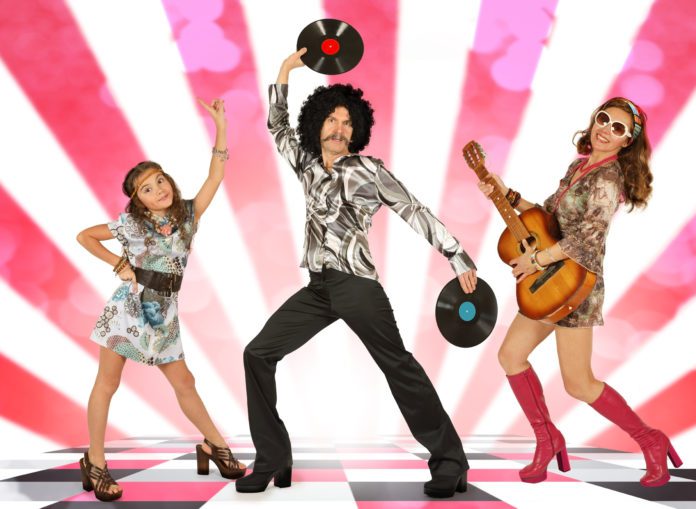The 1970s were truly a decade unlike any other. With the influence of the hippie movement from the 60s still going full swing and the next wave of feminism sneaking in, social norms were being rejected, and it was truly a decade of anything goes. The 70s saw bold new colors, unusual patterns, and disco galore take over the spotlight of fashion. Women’s fashion began to sway more towards menswear, and men’s began to transition from plain and boring to colorful, exotic, and groovy.
It’s no doubt the 70s were a major turning point in fashion that has still had an effect on our modern world today. But to give you a deeper look into the changes in the fashion world, in this article, we’re going to delve into everything you need to know about the fashion of the 1970s. From its history to its styles and its most famous icons, let’s dive in and get started with a complete guide to the 70s for both men and women.
History of 70’s Fashion
To start, the 1970s were a true mix and mash when it came to fashion, and comfort won over the 70s fashion more than anything else. The 70s began with a continuation of the hippie style, which first came into the public eye during the late ’60s. With this influence still going hot, the 70s put a major emphasis on everything handmade, and soon to follow, even big-name designers picked up the trend.
Aside from this, the next wave of feminism was also going strong during the 70s, and women were gaining more freedom to be who they wanted to be. Soon to follow, women’s clothing began to get looser and more inspired by menswear. This particular influence was majorly thanks to designer Yves Saint Laurent, who presented the tuxedo as a form of womenswear in the late 60s. However, it wasn’t until the early 70s that the famous actress Bianca Jagger adopted the look, inspiring women to take up their own unique style and gain more personal freedom in the way they chose to dress.
Towards the end of the decade, it was all disco all the time, and fashion continued to push the previous thresholds for men and women. More than anything, perhaps the biggest change from the 60s into the 70s in regards to fashion is that gender norms were thrown out the window. Disco fashion was bold, flashy, and expressive. It was all about standing out on the dance floor and expressing yourself through your look and your moves. For that reason, it wasn’t uncommon to see men wearing women’s clothes and vice versa.
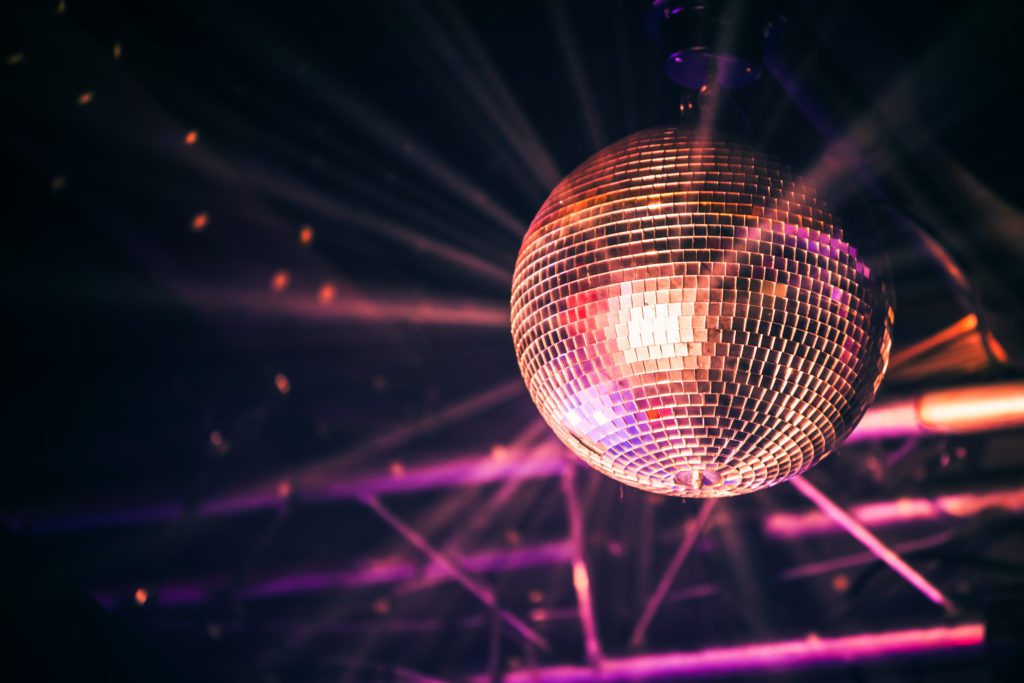
70s Fashion Icons
Now that we’ve gone over some of the history of the 70s fashion let’s talk about some of the major icons of the decade. Here’s a brief list of some of the top fashion icons of the 70s for both men and women.
Female fashion icons
1. Stevie Nicks
To start, Stevie Nicks was one of the most popular icons of the time with her impeccable bohemian style. From her velvet dresses to her boho fringe shawls, Stevie always expressed herself in such a loose and free-spirited way. Not to mention, Nicks also often finished her individualistic looks with a pair of platform clogs, which majorly helped to contribute to their rise in popularity throughout the decade.
2. Bianca Jagger
Next, Bianca Jagger easily had one of the biggest influences on the fashion world in the 1970s. Bianca’s look ranged anywhere from retro disco fashion to bold and new menswear style suits. It is believed the biggest reason women ever started wearing suits in the first place was due to Bianca Jagger’s swagger influence. Therefore, she, without a doubt, had a major influence on the fashion world of today in more ways than one.
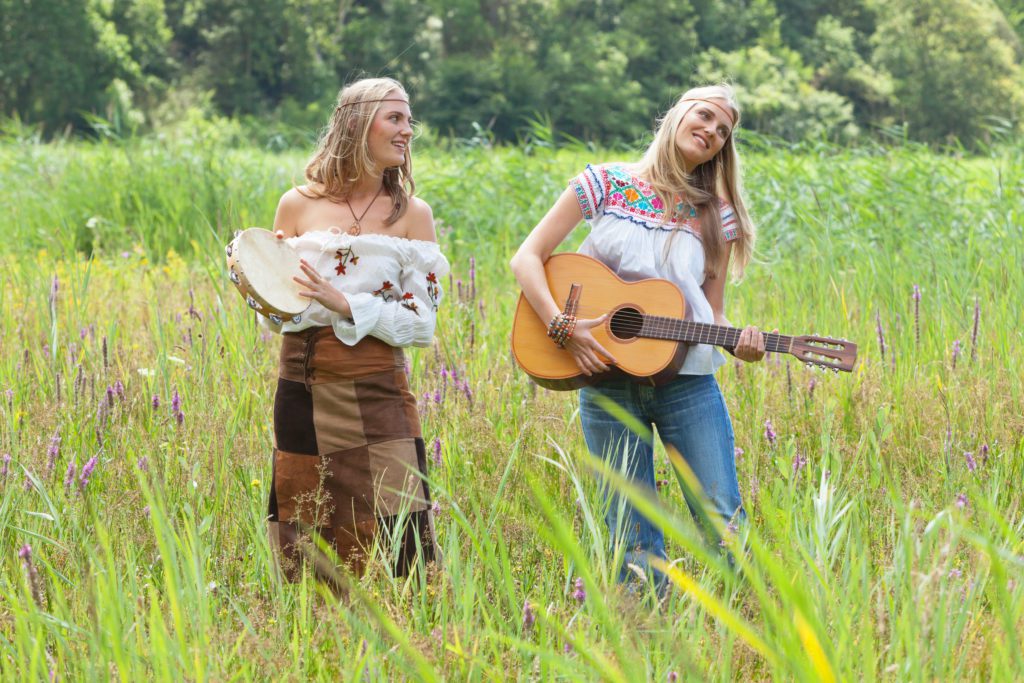
3. Cher
Next, Cher was another major fashion icon of the 70s, as she brought forth an admirable boho/disco statement to the fashion world. This look included everything from jumpsuits, floral hippie prints, flared bottoms, and boho crop tops. Cher was and still is an icon, and her statement pieces through the 70s were truly unparalleled.
4. Joni Mitchell
And finally, Joni Mitchell was another one of the most popular style icons of the 70s that truly helped to define the decade. Her style can best be described as a mix of mod and boho and typically consisted of hippie designs, including tie-dye tops, kaftans, peasant tops, and of course, long, flowy hair.
Male fashion icons
1. John Travolta
For men, it wouldn’t be the 70s if we didn’t mention the influence of John Travolta, the pop culture king. John Travolta first majorly came into the public eye in the 70s during Saturday Night Fever as an instant icon in his evocative white suit. Something about him just had an unparalleled swagger that inspired people to stay out on weekend nights disco dancing and just letting loose.
2. Freddie Mercury
Next, Freddie Mercury was yet another powerful icon of the decade. Freddie not only influenced an era with his jaw-dropping music but also with his retro, flamboyant style that was truly unmatchable. His style consisted of everything from women’s pants to bodysuits, bold pattern designs, and lavish and luxurious jackets. Truly, Freddie saw no boundaries when it came to his artistic expression, and because of this, created a legend of himself in more ways than one.
3. David Bowie
Next, alongside Freddie Mercury, David Bowie was undoubtedly one of the biggest influences on 70s fashion. His vibrant Ziggy Stardust alter ego would continue to influence not only his sound but his electrifying fashion statements as well. Truly unlike any other decade, the ’70s were when Bowie decided to take a risk in fashion and let his vivid love of glitter and genderfluid designs run free, and people loved him for it.
4. Mick Jagger
And finally, it’s no surprise that Mick Jagger made the list of icons for the 70s, as he had a unique style truly no other could pull off. Mick took inspiration from many different subcultures and slowly began to incorporate it into the pieces he wore. His looks often featured eye-catching designs, including cord jackets, crop tops, and leather kecks. Truly, no one had the moves or the swagger like Jagger, which is why he has still left a lasting impression in our modern world today.
Popular Styles for Women of the 1970s
Now, when it came to the popular styles of the decade for women, the 70s were incredibly diverse and were heavily focused on making womenswear more loose and casual, with much of it inspired by men’s clothing. However, there are a few key styles for the decade that were more popular than others. Here’s a quick guide to them.
Dresses
Starting off, holding onto styles of the previous decades, dresses continued to be one of the most popular pieces of clothing women would wear in the 70s. However, the changes in style were new and included a larger variety of styles than previous decades had. This typically ranged anywhere from the mini shift dress, tunic dresses, jumper dresses, or the drop waist dress. Many of these dresses even began to appeal to the hippie aspect of the 70s, featuring floral or paisley swirls with a variety of colors.
By the mid-70s, however, dresses began to take a step back to the early 40s and 50s, mimicking the A-line or pleated skirts that many women had come to love. And soon to follow, one-piece dresses with a swingy skirt quickly made up the most common dress of the decade.
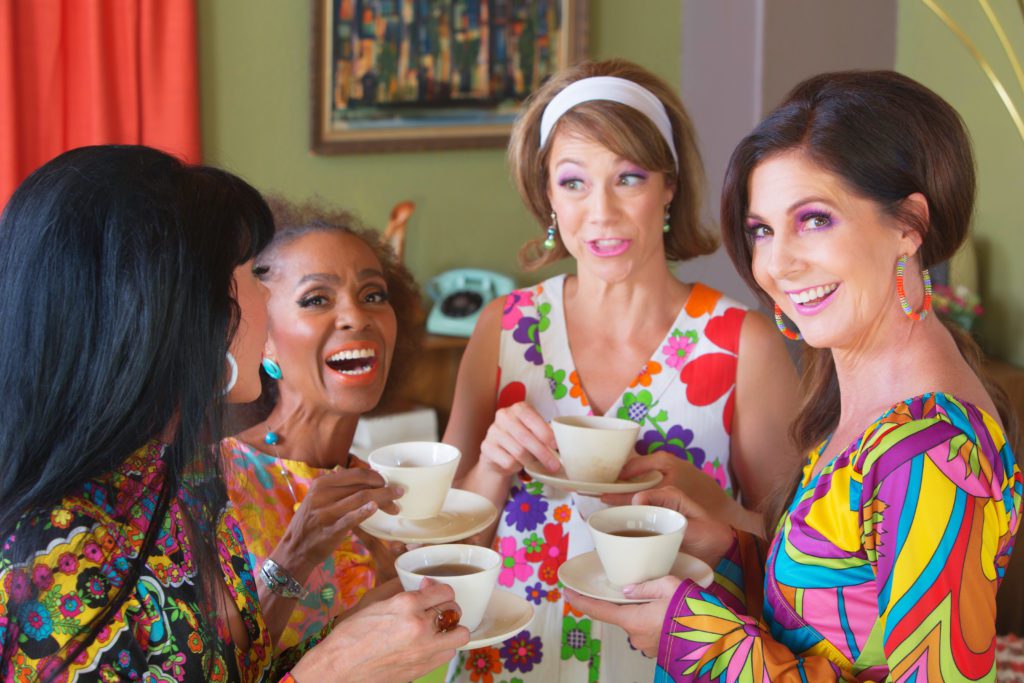
Jeans
Next, another big staple piece of the decade worn by women was jeans. While jeans had been in the fashion world for a while now, they were typically only worn by men or rebellious teens, but rarely by a woman, unless she was hidden away at home. However, during the 1960s and into the early 1970s, hippies began to wear jeans, which helped to pave the way for them as a norm in every woman’s closet not long after.
With that said, women’s jeans were incredibly diverse in the 70s. Flared jeans and bell-bottoms were considered the women’s fashion staple of the time. However, towards the end of the decade, jeans started to become more slim-fitting, canceling out the popularity of flared bottoms. Blue jeans also rose in popularity during this decade and could be worn day or night.
Jumpsuits
Next, jumpsuits were another popular piece in fashion in the 70s and were often worn by both men and women. Popularized by The King, Elvis Presley, jumpsuits of the decade were glamorous and exotic, featuring bright colored fabrics, flared legs, and bell sleeves. They were most commonly styled with a pair of platform heels, which made it a perfect disco outfit.
However, disco wasn’t the only time a woman would wear a jumpsuit. In fact, women had begun wearing jumpsuits in the late ’60s for hosting dinner parties, but soon, the jumpsuit became a mainstream item that men and women would wear everywhere.
Hippie/Boho style
Next, the hippie/boho style is what most people typically think of when they look back on 70s fashion. It was all about the tie-dye pieces, flowy dresses, sandals, and peace and love, man. When it came to the fashion for this, women commonly wore headbands, boldly patterned dresses, clogs, and beaded necklaces/bracelets. While men, on the other hand, shared a similar look to the women; but most commonly would wear denim jackets and tie-dye pieces, as well as a few homemade accessories.
All around, the hippie style was about rebelling against social norms and keeping things more loose and natural, and that can easily be seen in the most common fashion of the time that would continue to influence mainstream media throughout the decade.
Casual wear
Next, when it came to the casual wear of the decade for women, it was all jeans all the time. For most women, daily fashion typically included wearing high-waisted, wide-leg pants in bold or pastel colors paired with a knit top, peasant blouse, or polo shirt. In the warm summer days when it was too hot to wear pants, most women would opt for high-waisted denim or knit shorts paired with a simple ringer tee or striped top instead.
You can read more about women’s casual wear in the 70s in this article by VintageDancer.com.
Work fashion
Next, when it came to women’s work fashion, of course, just like the changes in fashion were happening and women were gaining more freedom, so was that in the workplace. Women would traditionally wear dresses to work in the 60s, and there was some confusion on whether women should be allowed to wear trousers to work instead as fashion began to change. Ultimately, the way a woman dressed truly depended on her occupation but could include anything from dresses to skirts to trousers or suits.
Women’s Shoes
Next, in the ’70s, just like our modern world, there was a variety of shoes a woman would wear for different occasions. From work to home, shoes were vastly unique, and all served different purposes. Here is our list of some of the most common shoes you would find women wearing in the 1970s.
1. Platform shoes
To start off, when it comes to shoe trends in the ’70s for women, their motto was certainly ‘bigger is better,’ which can easily be seen through one of the most common shoes of the decade, known as the platform shoe. Platform shoes were the most popular style of shoes for both men and women through the 70s. Most platform shoes were made up of chunky or block heels, and many of them featured glitter and or built-in lights within them to match their disco theme.
While these shoes were most commonly worn for disco, women could also be seen sporting them in more casual settings as well, pairing them with flared or bell-bottom jeans.
2. Clogs
Next, clogs were another popular style of footwear in the 1970s that just about everyone owned. Clogs were shoes carved from wood that were meant to contour the shape of the average foot but didn’t conform to fit the individual wearer. For this reason, there was often a leather lining or padding placed within the shoe to help cushion the bottom of the foot to make it more comfortable. Clogs were also most commonly paired with bell-bottom jeans but could even be styled with dresses and skirts.
3. Earth Shoes
And finally, following the vibe of peace and love, earth shoes were another popular choice for women throughout the decade. Inspired by the hippie movement, earth shoes were designed with a thicker front sole and thin heel and were most commonly made of organic and sustainable materials. While these are now often considered to be the ugliest shoes of the decade, they were incredibly popular at the time with hippies and free-spirited individuals who wanted to help save the planet.
Accessories
Jewelry
Next, during the 1970s, just as with fashion, the jewelry trends ranged vastly in styles and design, and people typically chose to wear what helped them to express themselves more than any other decade. For this reason, layering necklaces, as well as mixing and matching different styles to create a truly unique look, was very popular. Here are a few of the top jewelry trends of the 1970s:
- Long, dangling earrings
- Large hoop earrings
- Chokers
- Faux pearls worn in layers
- Bangles made of gold and silver
- Handmade woven bracelets
And more. Of course, the style of the decade was uniquely based around the individual, and women typically chose to do what they wanted in terms of their style more than ever throughout this decade. For that reason, the jewelry trends and possibilities were truly endless when it came to the 70s.
Makeup
Next, when it came to women’s hair and makeup of the 1970s, the trends and styles were incredibly diverse. Half the women were experimenting with bright colors from the influence of disco and more free will, while the other half felt makeup objectified women and boycotted the makeup industry as part of the hippie movement. While the styles did vary vastly, there were a few of the more common trends you would see in everyday life. Makeup trends of the decade that you would most commonly see included:
- Thin and arched brows
- Red or plum lipstick
- Eyeshadow in the shades of blue, green, purple, pearlescent, or iridescent sheen
- White or silver shimmer eyeshadow to highlight
- Berry shades for blush
- Shiny lip gloss in clear or pink
- Very bold bottom lashes
Above all else, the makeup of the 70s was highly expressive and could feature everything from decked out with bold shimmer and iridescent colors or plain and simple no-makeup looks. Either way, the makeup of the decade is truly memorable and was even worn by many men of the decade as well.
Hair
Next, when it came to women’s hairstyles, once again, the 70s were a unique time of expression, and their hair trends followed that same mentality. However, if you were to look at a guide to the most common hairstyles for women of the time, this might include:
1. The Shag
Thanks to the influence of Jane Fonda’s hairstyle throughout the 70s, the shag quickly rose into popularity with both men and women. This style can best be described as a mid-length style with even layering cut with the shortest at the top of the head to the longest at the bottom to create an ultimate “shaggy” or messy look.
2. The Feathered Look
The next iconic feathered look was another popular hairstyle of the decade made famous by Farrah Fawcett in Charlie’s Angels. This style featured mid-length hair that was brushed outward, giving the appearance of the feathers of a bird and highly sought-after volume. Feathered hair continued to be worn by both men and women of the decade and was arguably one of the most admirable styles that many still wear today.
3. Straight and Sleek
And finally, long, straight hair also became highly fashionable during the ’70s. The look was meant to appear natural and was believed to be a direct influence from the hippie movement, which was still going hot throughout the 70s. Major influences of this hairstyle include Cher and Joni Mitchell.
Popular Styles for Men of the 1970s
Peacock Revolution
Now, when it came to popular styles for men of the decade, the peacock revolution was arguably one of the biggest trends of the 1970s that left a lasting impact. As a result of better-paying jobs, the ‘70s saw men dressing in bolder and more colorful designs that mimicked the look of a peacock, hence the name the “peacock revolution.” This style included everything from satin shirts to turtlenecks, bell-bottoms, and braided belts.
Overall, this was a turning point in fashion for men and would make way for bolder designs and deeper expression all throughout the decade.
Glam Rock Style
Next, another popular style of the mid-70s was known as the glam rock style. This style featured items such as velvet sports coats, shawl-collar tuxedo jackets, and satin shirts. Other key components of this look also included silk scarves, oversized collars, and platform shoes. This trend easily became one of the most popular of the time, especially in Britain, thanks to bold and flamboyant musicians, such as David Bowie and Freddie Mercury.
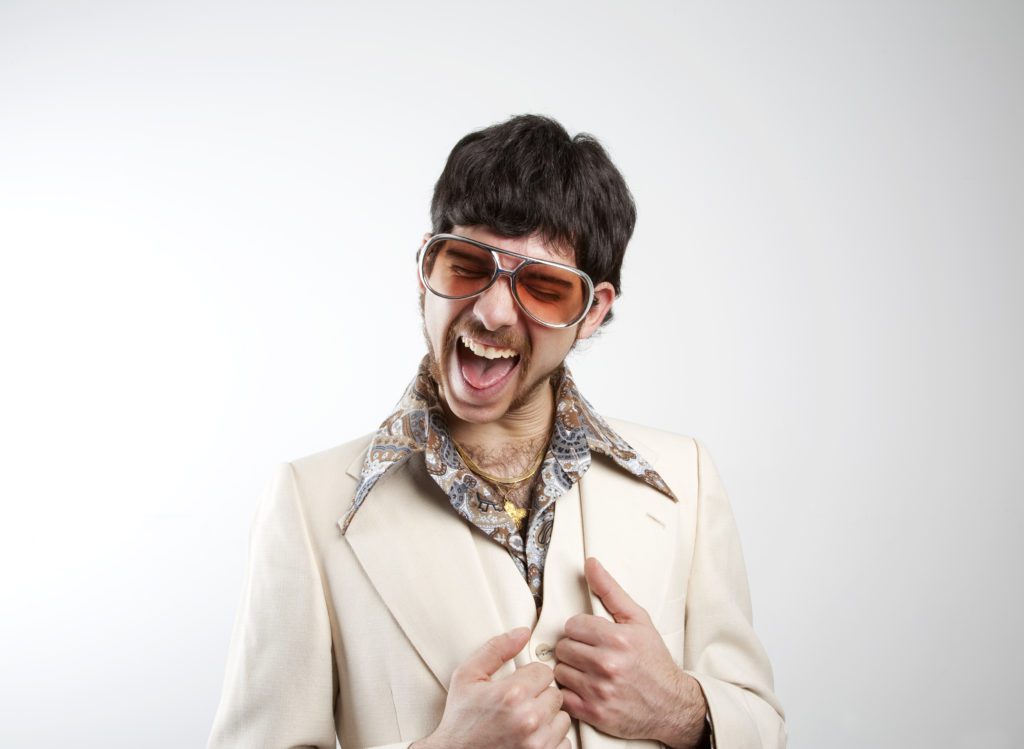
Knitwear
Next, another key fashion trend of the decade was knitwear. Men’s sweaters were big in the 70s and commonly featured a slim fit with a narrow collar and cuff. Other popular knitwear styles included zip-up cable knits, sweater jackets, and v-neck sweaters. As with anything else during the 70s, the colors were always incredibly bold with loud and eye-catching patterns to back them up.
70s Disco Fashion
And finally, it wouldn’t be the 70s if we didn’t pay our respects to disco fashion. Popularized by John Travolta in Saturday Night Fever, disco was all about expressing yourself on the dance floor, and for that reason, made the outfits incredibly bold, bright, and unique. For men, this look most commonly featured three-piece suits with flared pants, high-rise waistcoats, neckties, pointed shirt collars, and platform shoes.
For women, disco fashion often consisted of hot pants, tube tops, spandex short shorts, platform shoes, and disco pants in bright colors with a lot of sequins. Disco, however, was also the trend where men and women’s clothes crossed the threshold of gender roles more than ever, so it wasn’t uncommon to see men and women wearing very similar clothing styles on the dancefloor.
Casual wear
Next, when it came to the casual wear of the decade, most men, when they weren’t working, kept their outfits pretty simple, with jeans, colorful T-shirts, sweaters, and denim making up most of their style. Men continued to wear flannel, pleated pants, and the leisure suit and oxford shoes. In the summer, shorts and bright-colored Mexican or tribal pattern shirts were a norm and could be seen being sported by many men alike.
You can read more about men’s 70s casual wear in this article by thetrendspotter.net.
Work fashion
For work fashion, the wide lapels of suits from back in the ’30s began to reemerge in the 70s, and ties began to grow wider. Suits changed as well, transitioning from the dull and boring colors that we saw in previous decades to more bold and colorful leisure suits with flared collars. Many patterns such as plaid and checks were also often featured in suit sets, overall giving the suits of the decade a lot more character than that of previous decades.
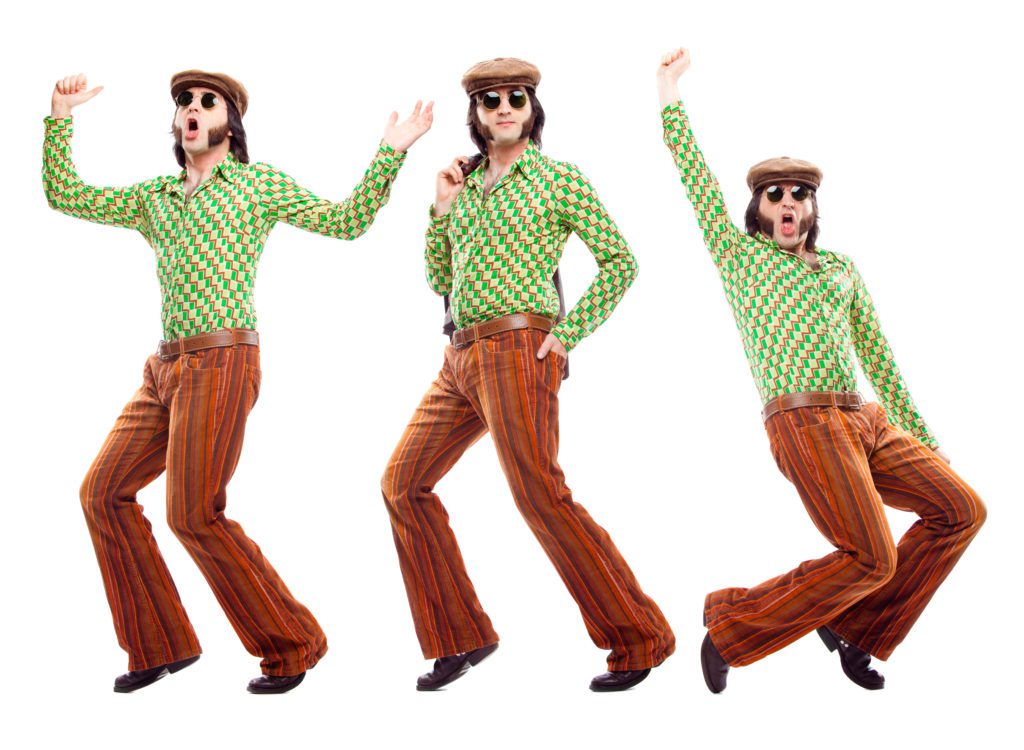
Men’s Shoes
For the men’s 1970s shoe fashion, men had an array of shoes they would wear to work or to outings, just as women did. However, in terms of common 70s shoes, these were what you were most likely to see a man sporting.
1. Platform shoes
Starting off, thanks to the influence of both David Bowie & John Travolta, just like women, platform shoes were a common piece worn by many for disco occasions. These shoes were typically made of a cork or wood base and a simple quarter-strap sandal on a suede-wrapped wedge-heel sole. The trend caught on quickly, and by the end of the 70s, it was considered to be relatively normal to see men wearing heeled shoes, including low-rise heels in the workplace.
2. Boots
Next, a variety of different boots of the time were popular with both men and women. However, cowboy boots completed the western look that many people of the time had wanted. Country artists such as Kenny Rogers majorly helped to increase the popularity of cowboy boots and bring them into the public eye, and they soon became one of the most sought-after shoes that almost everyone had a pair of in their closet.
3. Sneakers
And finally, athletic wear was another big trend in the 70s with men, due to an increase in televised sporting events, such as the Olympics. Bruce Jenner’s influence as a successful track star, in particular, in the 1972 Summer Olympics led to a major spike in widespread track and sporting styles being worn by all ages. And soon, sneakers started being worn as an everyday style for adults for running errands around town or going to the grocery store, when in previous decades you were expected to get much more dressed up to do so.
Accessories
Hairstyles
For men’s hairstyles, the early 70s saw a continuation of styles from the ’60s, such as the pompadour, but also welcomed in new styles, including longer and more natural hair, due to the influence of the hippie subculture. And as with the previous decade, volume was still heavily desired at this time and, as such, the 70s saw a rise of the afro and perm styles. However, later in the decade, many men chose to opt for shorter cuts instead, including buzz cuts and shag styles, making the styles of the decade unpredictable and unique.
Facial Hair
For facial hair, the 70s were a transitional point from the 50s and 60s of neat and clean and started to get a little longer and messier. Facial hair of the decade typically ranged from unkempt sideburns and mustaches to more clean-cut and sculpted styles. Older men tended to opt for the shorter and more conservative styles, while the younger men were more prone to embracing the wild new styles of the decade. Truly, each facial hairstyle depended on the man individually, as well as his place of work and what was allowed at it.
Conclusion
Overall, the 70s were truly a unique decade of embracing and expressing oneself more than any other decade. With the continual influence of the hippie movement and feminism, the 1970s brought with them an entirely different effect than that of the 60s and will always be remembered as a groovy decade of disco nights, free love, and genderfluid fashion that still continues to influence many fashion trends of our modern world today.
Sources:
https://glamourdaze.com/2015/09/the-1970s-makeup-look-5-key-points.html
https://www.retrowaste.com/1970s/fashion-in-the-1970s/
https://fifthavenuegirl.com/2021/02/22/70s-fashion/
https://vintagedancer.com/1970s/1970s-fashion-history/
https://www.marieclaire.co.uk/fashion/1970s-fashion-moments-that-defined-seventies-style-96107


